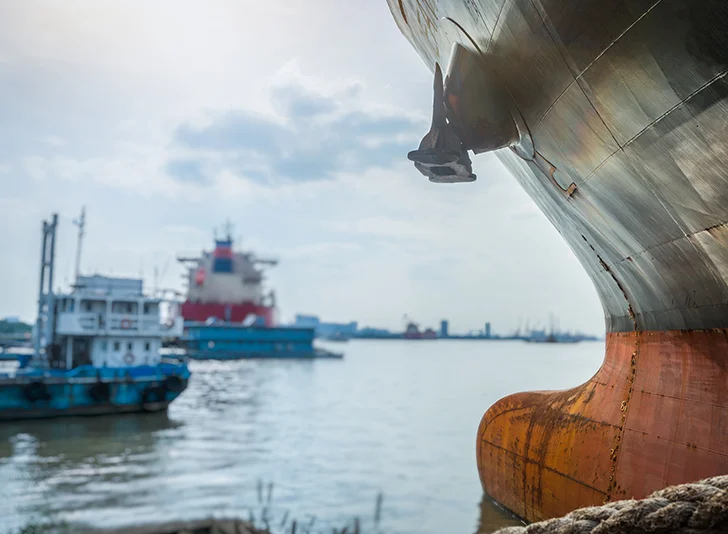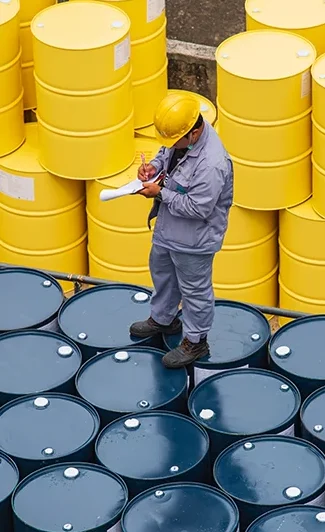
- November 20, 2023
- 0 Comments
How Mercaptans in Some U.S. Crude Oil Exports Pose Problems and Costs for the Oil Industry
Crude oil quality is an important factor that affects the value and the performance of the crude oil and its byproducts, such as gasoline, diesel, jet fuel, or petrochemicals. Crude oil quality is determined by various physical and chemical properties, such as the API gravity, the sulfur content, the viscosity, the acidity, and the metal content of the crude oil. Crude oil quality can vary depending on the source, the type, and the location of the crude oil, and it can also change during the production, transportation, storage, and refining processes of the crude oil.
One of the crude oil quality issues that has been gaining attention lately is the mercaptans content in some U.S. crude oil exports. Mercaptans, also known as thiols, are organic compounds that contain sulfur and hydrogen, and have the general formula R-SH, where R is an alkyl or aryl group. Mercaptans are undesirable in crude oil for several reasons, such as:
Mercaptans have a strong and unpleasant odor, similar to rotten eggs or skunk spray, which can cause nuisance and health problems for the workers and the communities near the crude oil facilities.
Mercaptans can react with oxygen and form disulfides, which can cause corrosion, fouling, plugging, and scaling of the pipes, tanks, and equipment that are used to produce, transport, store, and refine the crude oil.
Mercaptans can interfere with the refining and processing of the crude oil, as they can reduce the catalyst activity, damage the equipment, contaminate the products, and increase the emissions and the environmental compliance costs.
Mercaptans are naturally present in some crude oils, especially in the sour crude oils that have a high sulfur content, such as the crude oils from Canada, Mexico, and Saudi Arabia. However, mercaptans can also be formed or introduced during the production, transportation, storage, and blending of the crude oil, due to various factors, such as:
The presence of hydrogen sulfide (H2S), which is a toxic and corrosive gas that is often found in the crude oil or the formation fluids. H2S can react with the hydrocarbons or the metals in the crude oil or the pipes, and form mercaptans or metal sulfides, respectively.
The presence of bacteria, which are microorganisms that can grow and multiply in the crude oil or the formation fluids. Bacteria can produce enzymes that can convert the sulfates or the sulfides in the crude oil or the formation fluids into H2S or mercaptans, respectively.
The presence of oxygen, which is a gas that can enter the crude oil or the formation fluids from the air or the water. Oxygen can oxidize the H2S or the mercaptans in the crude oil or the formation fluids, and form disulfides or sulfones, respectively.
The presence of water, which is a liquid that can be mixed with the crude oil or the formation fluids from the reservoir or the injection. Water can dissolve or carry the H2S, the mercaptans, or the bacteria in the crude oil or the formation fluids, and increase their concentration and mobility.
The presence of blending, which is a process that can mix different grades or sources of crude oil to improve or modify their quality and value. Blending can increase or decrease the mercaptans content of the crude oil, depending on the quality and the quantity of the crude oils that are blended.
The mercaptans content in some U.S. crude oil exports has become a concern for the oil industry, as the U.S. has become a major producer and exporter of crude oil, thanks to the shale revolution. The shale revolution has unlocked huge amounts of light-sweet crude oil from the tight and low-permeability formations, using horizontal drilling and hydraulic fracturing technologies. The shale revolution has enabled the U.S. to become the world’s largest producer and exporter of crude oil, and to achieve energy independence and security.
However, some U.S. crude oil exports, especially from the Permian Basin, which is the largest and the most prolific crude oil producing region in the U.S., have been reported to have high mercaptans content, which can cause problems and costs for the producers, shippers, refiners, and exporters of the crude oil. The high mercaptans content in some U.S. crude oil exports can:
Reduce the quality and the value of the crude oil, as it can lower the API gravity, increase the sulfur content, and increase the odor and the instability of the crude oil. The high mercaptans content can also affect the specifications and the differentials of the crude oil grades and locations, such as the West Texas Intermediate (WTI), the Brent, the Western Canadian Select (WCS), and the Magellan East Houston (MEH). These benchmarks are the reference prices for the different grades and locations of crude oil in the U.S. and the international markets, and they reflect the quality, the transportation cost, and the market conditions of the crude oil. The benchmarks are also used to price the crude oil contracts and transactions, and to hedge the crude oil price risk. The benchmarks are connected and interact with each other, depending on the availability and the accessibility of the crude oil supply, the demand and the preferences of the crude oil buyers, and the arbitrage and the competition of the crude oil markets.
Increase the transportation and storage costs of the crude oil, as it can cause corrosion, fouling, plugging, and scaling of the pipelines, tanks, and terminals that are used to transport and store the crude oil. The high mercaptans content can also increase the cleaning, flushing, and pigging requirements and expenses of the pipelines, tanks, and terminals, as well as the disposal costs of the mercaptans-containing waste or sludge.
Increase the refining and processing costs of the crude oil, as it can cause catalyst poisoning, equipment damage, product contamination, and environmental issues in the refineries or the processing plants that are used to refine or process the crude oil. The high mercaptans content can also reduce the yield, the quality, and the value of the refined or processed products, such as gasoline, diesel, jet fuel, or petrochemicals.
The mercaptans content in some U.S. crude oil exports is a complex and challenging issue, and there are different views and opinions on what causes it and how to solve it. Some of the solutions that are being implemented or proposed to address the issue are:
Using H2S scavengers, biocides, oxygen scavengers, or mercaptans removal technologies, to prevent or reduce the formation or the introduction of mercaptans in the crude oil. These solutions can be applied at the wellhead, the gathering system, the pipeline, the tank, or the terminal, depending on the source and the severity of the mercaptans issue.
Using filtration, centrifugation, electrostatic separation, or chemical treatment technologies, to remove or reduce the mercaptans from the crude oil. These solutions can be applied at the pipeline, the tank, the terminal, or the refinery, depending on the level and the type of the mercaptans content in the crude oil.
Using blending, dilution, or upgrading technologies, to improve or modify the quality and the value of the crude oil, and to meet the specifications and the differentials of the crude oil grades and locations. These solutions can be applied at the pipeline, the tank, the terminal, or the refinery, depending on the market and the customer requirements and preferences.
In conclusion, the mercaptans content in some U.S. crude oil exports is a problem that affects the entire value chain, from the producers, shippers, refiners, and exporters of the crude oil, to the benchmarks and prices of the crude oil. The mercaptans content is mainly caused by the corrosion, the bacteria, the oxygen, the water, and the blending of the crude oil or the pipes, and it can reduce the quality, the value, the profitability, and the competitiveness of the crude oil and its byproducts. The mercaptans content can also affect the inclusion or the exclusion of some U.S. crude oil grades or terminals in the assessment of the Dated Brent price, which can affect the arbitrage and the export potential of the U.S. crude oil. The mercaptans content is a complex and challenging issue, and there are various solutions that are being implemented or proposed to address it, such as mercaptans prevention, mercaptans removal, or crude oil blending.


